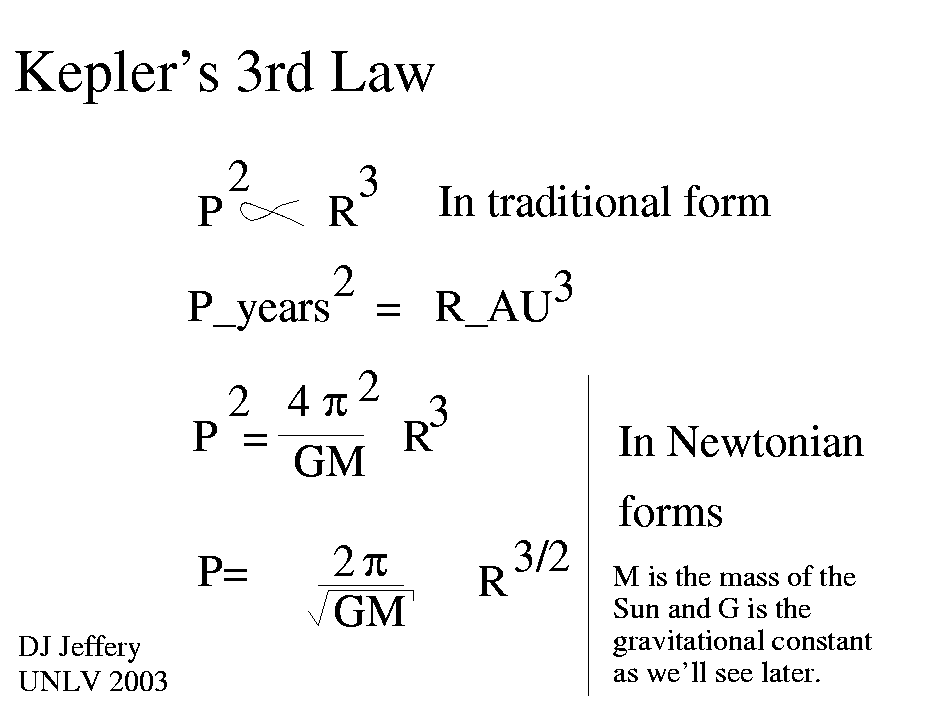
Caption: Kepler's 3rd law illustrated.
Features:
- In words,
Kepler's 3rd law
states that the square
of an orbital period
of a planet
is proportional to the
cube
of the
mean orbital radius (AKA
semi-major axis)
of its elliptical orbits
around the
Sun.
In natural units,
the formula is
P_years**2 = R_AU**3 ,
where AU stands for astronomical unit (AU) ≡ 1.49597870700*10**11 m ≅ 1.496*10**11 m. Of course, for the Earth, we have 1 = 1 since the natural units are natural for us Earthlings. - Kepler's 3rd law
was remarkable in showing there was a connection between
the specific geometry of
orbits
(i.e., ellipses)
and kinematics (i.e., which is concerned with
the description of motion).
- Isaac Newton (1643--1727) in his
Principia (1687)
derived Kepler's 3rd law
from Newtonian physics
(i.e.,
Newton's 3 laws of motion,
Newton's law of universal gravitation,
etc.) thereby
connecting kinematics
and dynamics (which is concerned
with the causes of motion).
The fact that
gravity is an
inverse-square law is
a key factor in the derivation.
- Note that
Kepler's 3rd law
only holds exactly for
gravitationally bound
two-body systems.
However, for planetary systems
and
satellite systems (AKA planet-moon systems),
it is usually the case that
the host star and each
planet
in the first case
and the host planet and each
moon in the second case
approximate a
gravitationally bound
two-body system
to high accuracy/precision.
- The Newtonian physics
formula for
Kepler's 3rd law is
P = [(2π)/sqrt[G(M+m)]]*R**(3/2) ≅ [(2π)/sqrt[GM]]*R**(3/2) for m << M ,
gravitational constant G = 6.67430(15)*10**(-11) (MKS units), M is the mass of the larger spherically symmetric astro-body, and m is the smaller spherically symmetric astro-body. In natural units, the second version of the above formula becomesP_years**2 = [1/sqrt(M/M_☉)]R_AU**3 ,
where the solar mass M_☉ = 1.98855*10**30 kg. - Johannes Kepler (1571--1630) published
Kepler's 1st law
and
Kepler's 2nd law
in
Astronomia nova (New Astronomy) (1609).
Kepler's 3rd law
was discovered later and published in
Epitome Astronomiae Copernicanae
(Epitome of Copernican Astronomy)
(1618--1621).
Local file: local link: kepler_third_law.html.
File: Kepler file: kepler_third_law.html.